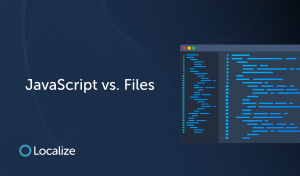If you’ve been using Language Service Providers (LSPs), there are some obvious traits or habits that you’re used to by now. One of those habits includes “hiding” the translator from you, the client. There are generally two reasons why they do this.
The first reason is that LSPs are pretty clueless themselves about who the exact translators are. The second reason is that they intentionally do not want clients and translators communicating with each other.
Irrespective of the which of these applies to your own LSP, one thing remains clear – the LSP rarely knows who translated what. LSPs are often dependent on smaller providers to get the job done. Sometimes, they may not have the expertise to handle a project with particular needs. So, their only option is to find someone who can.
For example, the client might want to translate legal content in Chinese, which may require specific skills that the primary LSP isn’t able to provide. So, the primary LSP will look for a partner who can get the job done. There is also the possibility that the secondary LSP might have to hire the services of a freelancer for the same purpose.
The point we’re making here is that the client at the top rarely knows who exactly is handling their project. The primary LSP relies on the secondary LSP, who relies on a freelancer. It’s like inception and the paying customer is the one who ends up in limbo.
A broken system
Outsourcing and sub-contracting aren’t all bad. However, it is definitely far from perfect. You see, when you rely on a model like this, fixing things becomes a problem. Even the slightest quality issues can take weeks or months to solve because tracking the original translator becomes a major challenge.
Even if the primary LSP is aware of who did the work, they will hesitate to reveal the truth because they might just end up losing the client to their partner.
So, what’s the solution?
Is it possible for clients to instantly find out who the original translator is, without going through
much trouble?
Well, we can’t say that there definitely is a solution, but Blockchain technology might just be one of the viable options. It’s likely that you’ve heard the term Blockchain being used in the context of cryptocurrencies. But, Blockchain is only the technology that cryptocurrencies run on. The technology itself has multiple applications.
You see, the Blockchain is basically an encrypted database that’s also distributed. It exists within a trustless decentralized environment. So, what can be done here is that each operator within the translation pipeline, such as the translator, editor, reviewer, or agency, can include metadata about themselves into the Blockchain.
This data can then be encrypted using a public key that belongs to the customer.
Then, to save the content to the Blockchain database, the translator will develop a hash of the source material and the metadata for the project. This can include the type of material, the language pair, and identifiers for the customer. The hash will then serve as the index for the concerned project.
Since the hash itself is the project’s identifier, there won’t be a need to save the translated text or the complete source.
Similarly, each member of the project pipeline can add their own record to the blockchain with the help of the customers public key and the project’s hash.
Once the records are decrypted by the client, it will reveal who worked on the project at each stage.
The Blockchain is trustless by nature and this serves as a major advantage. Even competing vendors can leverage the platform without worrying about their private details being exposed. As for the very process of keeping the Blockchain running i.e. building the block, hosting the database etc., it can be done by the LSPs that participate in the network.







